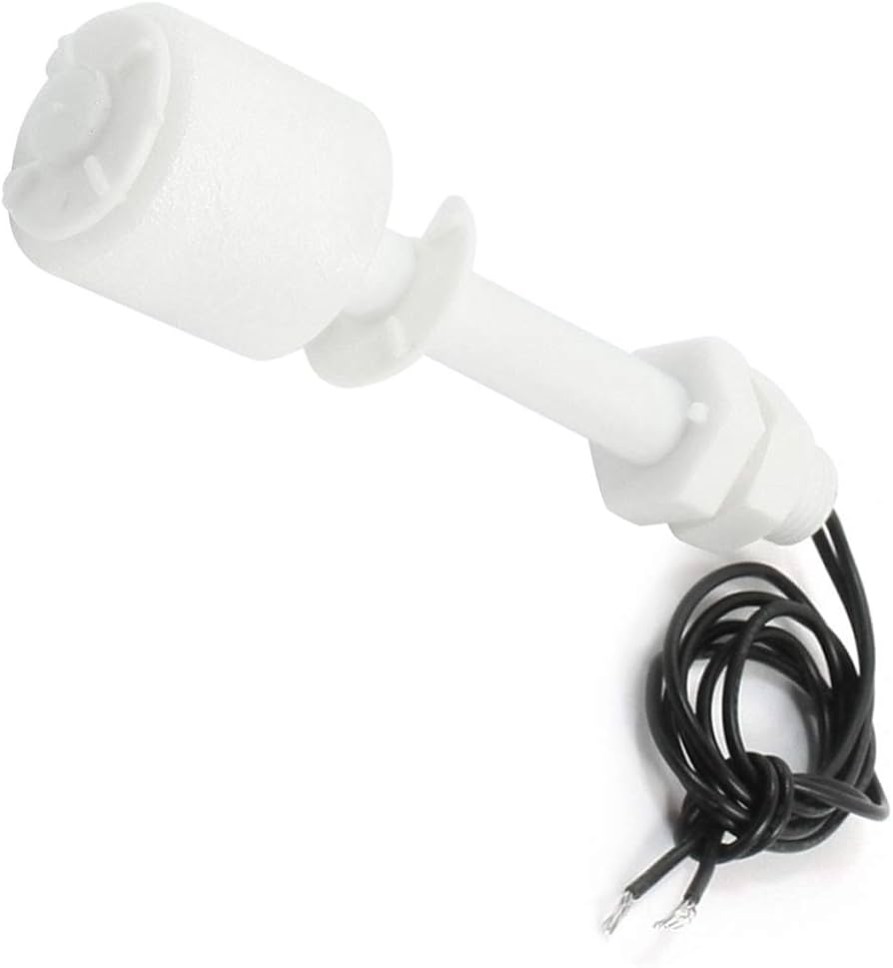








MAGNETIC FLOT SENSOR WHITE
The sensor uses a magnet and a reed switch to detect liquid presence. The reed switch has its contacts encased in a glass tube with inert gas, and operates by an applied magnetic field. The figure shows the float and the stem. The float integrates a magnet, and the stem a reed switch at the set point.
₹ 159 ₹199
199



| Made In : | India |
Add FAQ
A magnetic float sensor is a type of level sensor used to detect the level of a liquid in a container. It typically consists of a float with a magnet inside and a stationary magnetic reed switch or Hall effect sensor. The float rises and falls with the liquid level, causing the sensor to switch or change state.
Key Features:
-
Float Mechanism:
- Float: A buoyant object that moves up and down with the liquid level.
- Magnet: Embedded inside the float to interact with the sensor.
-
Sensor Types:
- Reed Switch: A magnetic switch that opens or closes when exposed to a magnetic field from the float's magnet.
- Hall Effect Sensor: An electronic sensor that detects changes in the magnetic field and provides a corresponding output signal.
-
Output Types:
- Digital Output: Typically provides a binary signal (high or low) indicating whether the float is in a certain position.
- Analog Output: Some sensors provide a continuous voltage or current signal proportional to the liquid level.
-
Temperature Range:
- Operating Conditions: Designed to operate within specific temperature ranges suitable for the intended application.
-
Materials:
- Durable: Made from materials resistant to the chemicals and temperatures of the liquid being measured.
Applications:
-
Liquid Level Monitoring:
- Tanks and Reservoirs: Used in industrial tanks, water reservoirs, and chemical containers to monitor liquid levels.
-
Pump Control:
- Automated Systems: Controls pumps to prevent overflows or dry running by switching the pump on or off based on liquid levels.
-
Water Management:
- Well Water Systems: Monitors the water level in wells and controls water supply systems.
-
Automotive and Marine:
- Fuel Level Sensors: Used in vehicles and boats to measure fuel levels.
Selecting the Right Sensor:
-
Float Size and Material:
- Compatibility: Ensure the float size and material are compatible with the liquid and container dimensions.
-
Sensor Type:
- Reed Switch or Hall Effect: Choose based on whether you need a simple mechanical switch or a more precise electronic sensor.
-
Output Requirements:
- Digital or Analog: Select the output type based on how you will interface with the sensor and process the data.
-
Temperature and Chemical Resistance:
- Durability: Ensure the sensor can withstand the environmental conditions and chemical properties of the liquid.
Wiring and Installation:
-
Power Supply:
- Voltage Requirements: Provide the appropriate power supply for the sensor if required (usually 5V or 12V DC).
-
Connecting the Sensor:
- Wiring: Connect the output of the sensor to the input of a controller or monitoring system. For digital sensors, this might be a simple on/off connection; for analog sensors, you’ll need to connect to an analog input.
-
Mounting:
- Positioning: Mount the float and sensor in a position where the float can move freely and accurately reflect the liquid level.
-
Calibration:
- Adjust Settings: Some sensors may require calibration to ensure accurate level readings.

0 Reviews For this Product












.jpg&width=225&quality=80)
